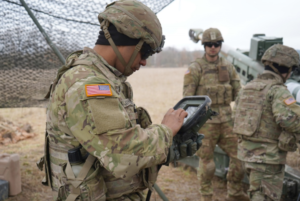
LOS ANGELES — The Army is working to update its standards for developing new position, navigation and timing (PNT) capabilities that will incorporate more science-and-technology efforts and help the service weed out implausible technologies before they make it to a program status. The service’s acquisition executive recently signed the first reference architecture that would require service capability offices to develop a PNT strategy, and build technologies to the architecture’s specifications to allow for easy integration, said Col. Nickolas Kioutas, PEO…

 By
By 











